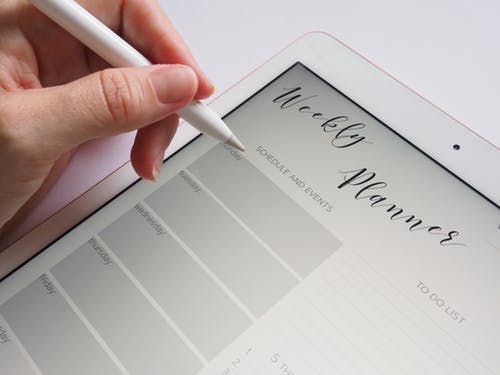
If your business can fill up its schedule with appointments day after day, congratulations: In a pandemic, that’s impressive.
When you’re busy, however, you can’t afford for appointments to run long. Those that go longer than they should can disrupt the entire schedule and ruin a customer’s day.
The question for leaders is how to keep sessions to their scheduled length. A little experimentation can keep things running smoothly. Here’s what to try:
1. Add Buffer Time Between Appointments
If you’re consistently having trouble with appointments running long, consider adding a buffer between them. This small window of time will give you just enough leeway to finish up a longer appointment without it eating into the next one.
If you don’t use the buffer time, you can go straight into the next appointment if the customer is already waiting. They’ll be pleased with the quick service, so it’s a win-win. If they haven’t arrived yet, take this time to tidy up and prepare for the guest to arrive.
2. Increase Appointment Durations
Instead of, or in addition to, adding buffer time, consider extending appointment times. The fact that appointments keep running long might indicate your customers or employees are struggling to squeeze everything in.
Gather data on how long the average appointment lasts. If the average is higher than the time slot designated for an individual appointment, expand it. You might not be able to take as many customers in a day, but you’ll be able to take better care of them.
3. Try a New Scheduling Method
Using a different scheduling method might provide better results. For example, you can try modified wave scheduling instead of the traditional time-blocking model.
Wave scheduling is a common appointment-setting practice in the medical field. Basically, it involves scheduling multiple appointments at the same time with buffer time at the end of each hour.
Periodic downtime allows longer and shorter appointments to coexist, but it may mean asking some customers to wait. If you implement this, keep an eye on your waiting times.
4. Cross-Train Employees
One reason appointments might be running long is because your employees are only trained in specific tasks. If only one worker on shift can complete a certain task, the customer might have to wait for them to be available, creating a bottleneck.
Whenever possible, cross-train your employees. Make sure everyone is capable of answering the phone and working the register. The more capable the team, the quicker appointments become.
5. Improve Workflows
Whether your employees are cross-trained or not, look for ways to improve their workflow. If employees are unsure about which tasks to handle in what order, things can get chaotic rather quickly.
Make sure each employee understands their role. Prioritize tasks in a visual system, such as a whiteboard or task management tool, so they understand what needs to be dealt with first. Uncertainty on your team slows everyone down.
6. Establish a Late-Arrival Policy
If a customer arrives late to their appointment, it will likely go over time. A late-arrival policy will discourage customers from dawdling in.
Your late policy should be strict enough that customers will want to avoid it, but not too harsh as to drive customers away. Remember, sometimes people are late for reasons out of their control.
Consider moving customers back in the queue if they haven’t arrived by the time their appointment is set. For those who have to wait, make sure your office is comfortable.
In addition to a late policy, make sure appointments start on time for customers who are punctual. Realize that this might mean pulling employees away from other tasks.
7. Implement Automation
Using technology, you can cut down on busywork by automating some tasks. You already let customers book online: Why not offload other parts of the process as well?
For example, you can automate your check-in process so that it doesn’t require an employee’s time. Perhaps you can implement a chatbot to answer some questions they have prior to arrival.
8. Check in With Your Team
No one understands why appointments are running long better than your employees. They’re right in the thick of it and see inefficiencies that you may not. Going to them for advice is a great start.
Hold a meeting to discuss how to improve appointment management. Ask for their ideas on making appointments more efficient, getting customers to arrive on time, improving workflows, and rooting out other time-sucks.
9. Upgrade Your Equipment
Are the tools your employees use old and run down? Purchasing some new equipment could enable them to do better work faster.
While tools are expensive, remember that they’re an investment. They should cut down on appointment time, along with many other benefits.
For example, a more efficient hair dryer can reduce the time hairdressers spend at the end of each appointment. Better software or a faster internet connection enables personal assistants to book the same appointments with fewer clicks.
Find out why appointments are running long, and use this list to come up with a solution. Handling appointments efficiently will keep customers happy, help employees feel less stressed, and increase revenue for your business.



